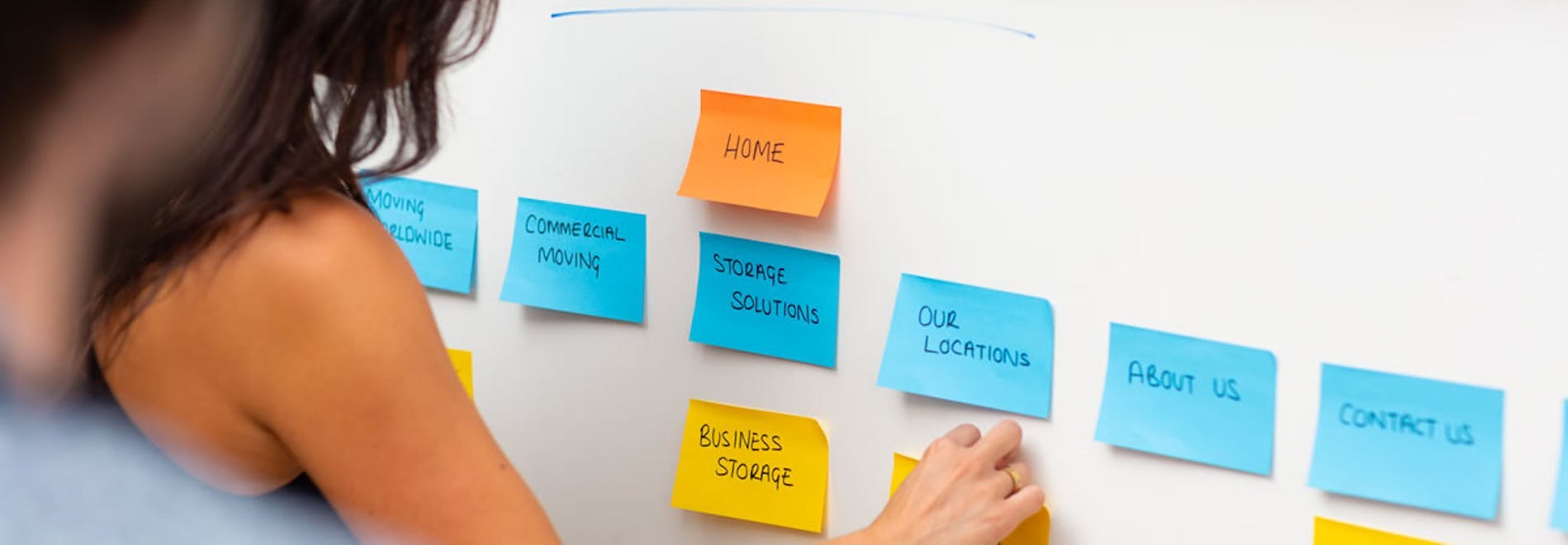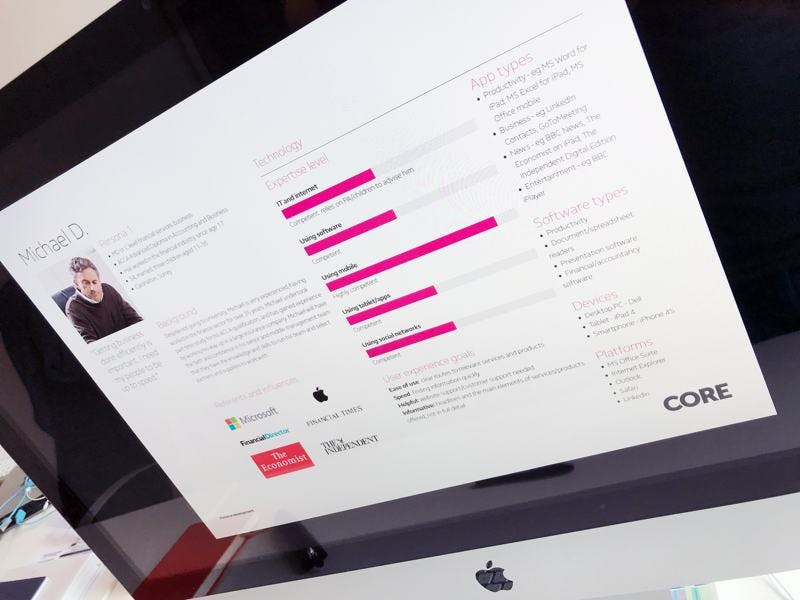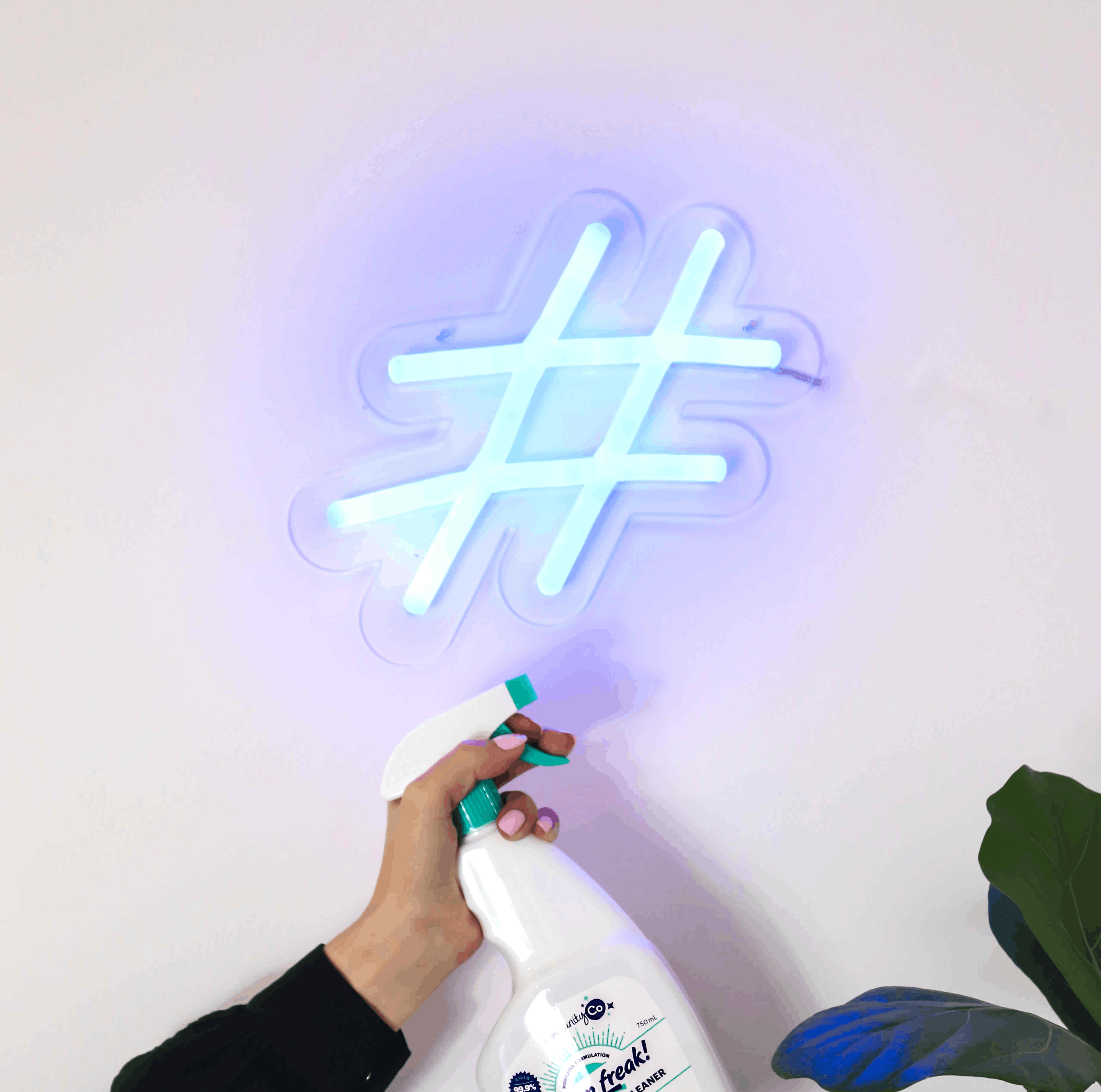Personas - keeping your users in mind

In developing a great website, your users have to be the primary focus. Here we discuss how personas can help you gain a stronger understanding of your audience.
Let’s say you’ve built a website (hooray!). It looks great, is developed using the very latest thinking in web technology and you’ve chucked loads of money at a massive social media campaign to promote it. Can’t fail right? Wrong, I’m afraid. The truth is if you haven’t done your research on your users, there’s no way you can build your site with the proper care and attention your specific user base requires.
The answer to this is a crucial stage at the very start of the website development process; persona development.

What is a persona?
A persona is a representation of a particular audience type which may be interested in your site. It can be as brief as a short list of their key details (e.g. age, gender, job title) or more complex with the inclusion of insights such as buying behaviours and related interests.
How many should I create?
It would be quite rare for a site to simply have one type of user visiting the site. If you believe that may be you, have a think to see if that one user you are thinking about could actually be multiple types of people (they might be different job roles, different ages or different nationalities). Conversely it’s wise not to create too many persona types as this may result in you getting muddled and losing sight of your key users. We would advise ultimately around 5-10 are fully fleshed out as actionable personas.
How do I find the data to create them?
Due to the wide ranging nature of personas, you can really grab your data from anywhere you have knowledge of your customers. If that’s a little too vague then a good starter for ten would be your Google Analytics account (and if you don’t have a Google Analytics account, you really should have a Google Analytics account!). The Demographics section is a minefield of data which can give you insights on age, gender, interests, browser preference and device type.
Another tip is to ask your sales team or whoever deals with your customers on a regular basis. They will be able to tell you more about the human side of your customers, dealing with them on an emotional level and therefore adding a further dimension to your personas.
What should they look like?
In any way that is easily consumable for the reader. Ideally it would be visual in nature and succinct in its wording as what we’re really looking for is for a vast range of people to be able to dip in and out of these personas. This means we want to stay clear of jargon as much as possible and waffly descriptors.
What do I use them for?
Now that you have created physical representations of your target audiences you can really try and put yourselves in their position. What do they want from your site? How may they find your site? Is the site easily navigable considering the level of digital experience of your audience? (e.g. different considerations for those in their 20s/30s to those in their 60s/70s)
If these questions are asked from a pre-build stage, the answers can help inform site structure and even future marketing, preventing you from playing catch up while on the back foot post-launch.
Should I bin them after launch?
No! The shelf life of your personas last long after your site is launched. They should help you in every iteration you want to make to the site. Whether that is a new feature or a piece of content, having your site personas to hand will give the update in question a focus and remind you of overall site goals.
That is not to say that they should be left untouched. Of course, your user base may change or evolve, so it’s always a good idea to revisit your personas from time to time. Even if no changes occur it will help to reinforce your user to you, enabling you to make smarter decisions based on the user’s preferences and not yours.
If you are interested in finding out more about persona development, please get in touch and we’ll be happy to help get digital working for you.



